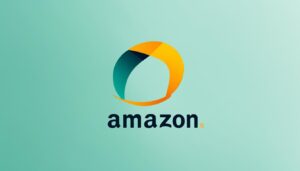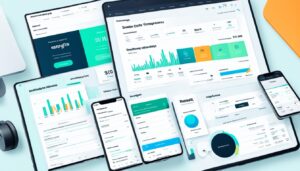As an Amazon seller, one of the most crucial aspects of your business is pricing. Effective pricing strategies can make or break your profitability on the platform. With millions of products listed on Amazon, the marketplace is highly competitive, and sellers need to optimize their pricing for success.
In this article, we will delve into the dynamics of Amazon seller pricing and provide practical tips and techniques for optimizing your prices to maximize profits. Understanding pricing strategies for Amazon sellers is paramount to success and will help you craft a unique approach for your business.
Key Takeaways
- Effective pricing is crucial on Amazon, where competition is high.
- Optimizing your pricing strategy is essential for maximizing profits.
- Understanding pricing dynamics can help sellers make informed pricing decisions.
- Pricing tools, monitor, and optimization software can streamline the pricing process.
- Offering strategic discounts and complying with MAP policies is essential for competitive pricing.
Understanding Amazon Seller Pricing Dynamics
Effective pricing is crucial for success as an Amazon seller. But with so many variables at play, how can sellers set prices that attract customers while also maximizing profits? That’s where understanding the dynamics of Amazon seller pricing becomes essential.
There are several key factors that influence pricing decisions on Amazon, including demand, competition, and market trends. Let’s take a closer look at each:
Demand
Understanding demand is vital when setting prices on Amazon. By analyzing sales history and customer behavior, sellers can determine the optimal pricing for their products to maximize profit.
Pro tip: Utilize Amazon’s demand forecasting tools to gain insights into what products and categories are in high demand.
Competition
Competitive pricing can make or break an Amazon seller’s success. Monitoring competitors’ pricing and adjusting accordingly is critical to staying competitive in the marketplace. Tools like Amazon’s Sales Dashboard and automated repricers can help sellers stay on top of competitors’ pricing strategies.
Pro tip: Avoid a race-to-the-bottom pricing strategy by differentiating products with unique features or bundling offers. Use a high quality repricer like Fusion.
Market Trends
Keeping up with market trends is essential for Amazon sellers. With rapidly changing trends and consumer behavior shifts, being adaptable to current trends can give sellers an edge in the marketplace.
Pro tip: Use Amazon’s Best Sellers Rank to identify successful product categories and analyze product reviews to stay up-to-date with customer preferences.
As we can see, understanding the dynamics of Amazon seller pricing is crucial. By analyzing demand, competition, and market trends, sellers can develop effective pricing strategies that drive sales and maximize profits. In the next section, we’ll explore how to optimize pricing for profitability using practical tips and techniques.
Optimizing Amazon Seller Pricing for Profit
To excel on Amazon, it’s important to optimize pricing strategies to maximize profitability. Below are some tips and techniques to help you optimize your Amazon seller pricing:
Dynamic Pricing Tools
Dynamic pricing tools can help you stay competitive by changing prices based on market trends, demand, and competitor pricing. These tools can help you increase your sales by ensuring your prices are always competitive. Software like Fusion is the key to success.
Price Monitoring
Price monitoring can help you keep a close eye on your competitors’ prices and adjust your prices accordingly. Tools like CamelCamelCamel, Keepa, and Price2Spy can help you monitor prices on Amazon and other marketplaces.
Optimization Software
Optimization software can help you make data-driven decisions by analyzing vast amounts of data and providing insights into price adjustments. Tools like Fusion Analyzer, Fusion Analyzer Extension, and Profit Guard can help you optimize your prices based on data analysis.
Utilizing Discount Management for Competitive Edge
One effective strategy for optimizing pricing on Amazon is discount management. By offering strategic discounts, sellers can attract more customers and gain a competitive edge in the marketplace.
However, it’s crucial to approach discounting with care and thoughtfulness. While discounts can help drive sales, they can also erode profit margins if not managed properly. That’s why it’s important to use discounting as part of a broader pricing strategy.
Discounting can take many forms, including percentage-based discounts, dollar-value discounts, and buy-one-get-one offers. The key is to use discounts strategically, with a clear understanding of their impact on profitability.
Examples of Effective Discounting Strategies
Let’s say you’re selling products in a highly competitive category with razor-thin profit margins. You could offer a percentage-based discount for customers who buy multiple items, encouraging them to purchase more while still maintaining healthy margins.
Another strategy could be to use time-limited discounts to create urgency and drive sales. For example, you could offer a limited-time discount to new customers as an incentive to try your products or create a sense of urgency around a clearance sale.
MAP Monitoring for Pricing Compliance
Amazon sellers need to be aware of the concept of Minimum Advertised Price (MAP) for their products. MAP is the minimum price at which a seller can sell a product as agreed upon with the manufacturer. The purpose of MAP is to maintain a fair and consistent pricing policy across all sellers. Violating MAP policies may result in a loss of business for a seller as it can lead to customer skepticism about the product’s quality or value. Additionally, it can damage the seller’s relationship with the manufacturer, thereby affecting future business prospects.
Effective pricing for Amazon sellers requires monitoring adherence to MAP policies. Compliance monitoring tools, such as the ones offered by Storeautomator and ChannelAdvisor, are available that can help sellers ensure they are not violating MAP policies. These tools alert sellers to any deviations from the agreed-upon MAP and provide insights into competitor pricing trends. Additionally, these tools can help sellers adjust pricing strategies and maintain competitive pricing while adhering to MAP policies.

Monitoring MAP policies is essential for Amazon sellers looking to maintain profitable pricing strategies while staying compliant. It helps build trust with customers and maintain trust and reputation with manufacturers. By integrating MAP monitoring into their pricing strategies, Amazon sellers can ensure long-term growth and profitability.
Bulk Pricing Updates for Efficient Management
Managing pricing for a large number of products can be time-consuming and challenging for Amazon sellers. This is where bulk pricing updates come in handy. With tools and strategies that streamline the process of updating prices across multiple product listings, sellers can optimize pricing for maximum profitability.
One of the key benefits of bulk pricing updates is the ability to adjust prices in real-time based on market trends and changing demand. This ensures that sellers remain competitive in the marketplace and make the most out of every sale.
In addition, bulk pricing updates can also help sellers manage promotional pricing effectively. By automating the process of updating prices during promotions, sellers can ensure that all pricing changes are made accurately and promptly.
Overall, utilizing bulk pricing updates is a smart strategy for Amazon sellers looking to optimize their pricing and increase profitability. By streamlining the process of updating prices, sellers can focus on other critical aspects of their business and stay ahead of the competition.
Analyzing Profit Margin with Calculators
Accurately calculating profit margins is essential for effective pricing strategies. Amazon sellers need to analyze their margins to determine optimal prices that maximize profits. Luckily, profit margin calculators can make this process much easier.
What are profit margin calculators?
Profit margin calculators are tools that help sellers calculate their profit margins. Sellers input data such as cost of goods sold, selling price, and other expenses, and the calculator provides the profit margin percentage. With this information, sellers can assess the profitability of their pricing strategies and adjust accordingly.
Using a profit margin calculator is straightforward. Sellers input the necessary data, and the calculator produces the profit margin percentage, which is the amount by which revenue from sales exceeds costs. This percentage should be compared to industry standards and ideal profit margins for the business to determine if pricing changes are necessary.
Why are profit margin calculators useful?
Profit margin calculators offer a range of benefits to Amazon sellers, including:
- Efficiency: Calculating profit margins manually can be time-consuming and complicated. A calculator automates this process and provides results instantly.
- Accuracy: By inputting precise data points, these calculators provide accurate calculations that help sellers avoid mistakes.
- Strategy assessment: Profits margins can provide sellers with valuable insights into their pricing strategies and how to optimize them for profitability.
Using profit margin calculators is a vital aspect of pricing strategy optimization for Amazon sellers. By accurately calculating profit margins and comparing them to other data points, sellers can make informed pricing decisions that maximize sales and profits.
Tracking Price Elasticity for Competitive Pricing
Price elasticity is the measurement of the responsiveness of demand for a product relative to changes in its price. In other words, it is the degree to which consumers adjust their purchasing habits in response to price changes. Understanding the concept of price elasticity is crucial for Amazon sellers when it comes to pricing their products effectively.
By tracking the price elasticity of their products, sellers can gain valuable insights into how their customers are likely to react to different pricing strategies. For instance, if a seller knows that their product has a high degree of price elasticity, they may be able to charge more without experiencing a significant drop in demand. Conversely, if a product has low price elasticity, a seller will need to be careful not to price too high, as this will likely result in a noticeable decline in sales.
To track price elasticity, there are several tools and software available that can provide valuable data and insights. These tools can help sellers predict how customers will respond to different prices and adjust their pricing strategies accordingly.
How to Track Price Elasticity
To track price elasticity effectively, Amazon sellers should consider the following:
- Using dynamic pricing software that can analyze customer behavior, monitor competitors, and adjust prices accordingly.
- Conducting pricing experiments to gather data on how customers respond to different prices.
- Monitoring product reviews and feedback to gauge how customers perceive the value of a product relative to its price.
Overall, tracking price elasticity is a crucial component of effective pricing strategies for Amazon sellers. By gaining insights into how customers are likely to react to different prices, sellers can set competitive prices that maximize sales and profits.
Amazon Seller Pricing Strategies Wrap Up
In conclusion, mastering effective Amazon seller pricing strategies is crucial for success in the highly-competitive marketplace. Understanding Amazon seller pricing dynamics is the first step in crafting effective pricing strategies. Analyzing demand, competition, and market trends can help sellers optimize their pricing for profitability.
Utilizing tools such as dynamic pricing software, price monitoring, and MAP compliance monitoring can help sellers stay competitive and avoid pricing violations. Bulk pricing updates can streamline the process of managing prices for a large number of products.
Calculating profit margins accurately using profit margin calculators is vital for analyzing and adjusting pricing strategies for optimal profitability. Tracking price elasticity can help sellers set competitive prices that maximize sales and profits.
Finally, promotional pricing can be a powerful tool for attracting customers and giving sellers a competitive edge. By following these tips for competitive Amazon seller pricing, sellers can maximize their profits and achieve success on the platform.
FAQ
Why is effective pricing important for Amazon sellers?
Effective pricing is crucial for Amazon sellers because the marketplace is highly competitive. By optimizing pricing strategies, sellers can maximize profitability, attract more customers, and stay ahead of the competition.
What factors influence Amazon seller pricing?
Several factors influence Amazon seller pricing, including demand for the product, competition from other sellers, market trends, the seller’s costs, and pricing strategies used by competitors.
How can sellers optimize their pricing on Amazon?
Sellers can optimize their pricing on Amazon by utilizing dynamic pricing tools, monitoring prices of competing products, and using optimization software that analyzes market trends and customer behavior to set competitive prices.
What is discount management, and why is it important?
Discount management is the strategic offering of discounts to attract customers and gain a competitive edge. It is important because well-timed and targeted discounts can increase sales, generate customer loyalty, and differentiate sellers from their competitors.
What is MAP monitoring, and why is it essential?
MAP monitoring refers to tracking and ensuring compliance with Minimum Advertised Price policies. It is essential to avoid undercutting pricing agreements with manufacturers, protect brand integrity, and maintain healthy relationships with suppliers.
How can sellers efficiently manage pricing for a large number of products?
Sellers can efficiently manage pricing for a large number of products by using bulk pricing updates. These updates streamline the process and allow sellers to make simultaneous price adjustments across multiple product listings.
How can profit margin calculators help sellers?
Profit margin calculators are useful tools for sellers to accurately calculate profit margins. By analyzing profit margins, sellers can evaluate the effectiveness of their pricing strategies, identify areas for improvement, and make informed pricing decisions to maximize profitability.
What is price elasticity, and why is it important to track?
Price elasticity refers to the sensitivity of demand for a product to changes in its price. It is important to track price elasticity because understanding how consumers respond to price changes helps sellers set competitive prices that maximize sales and profits.




